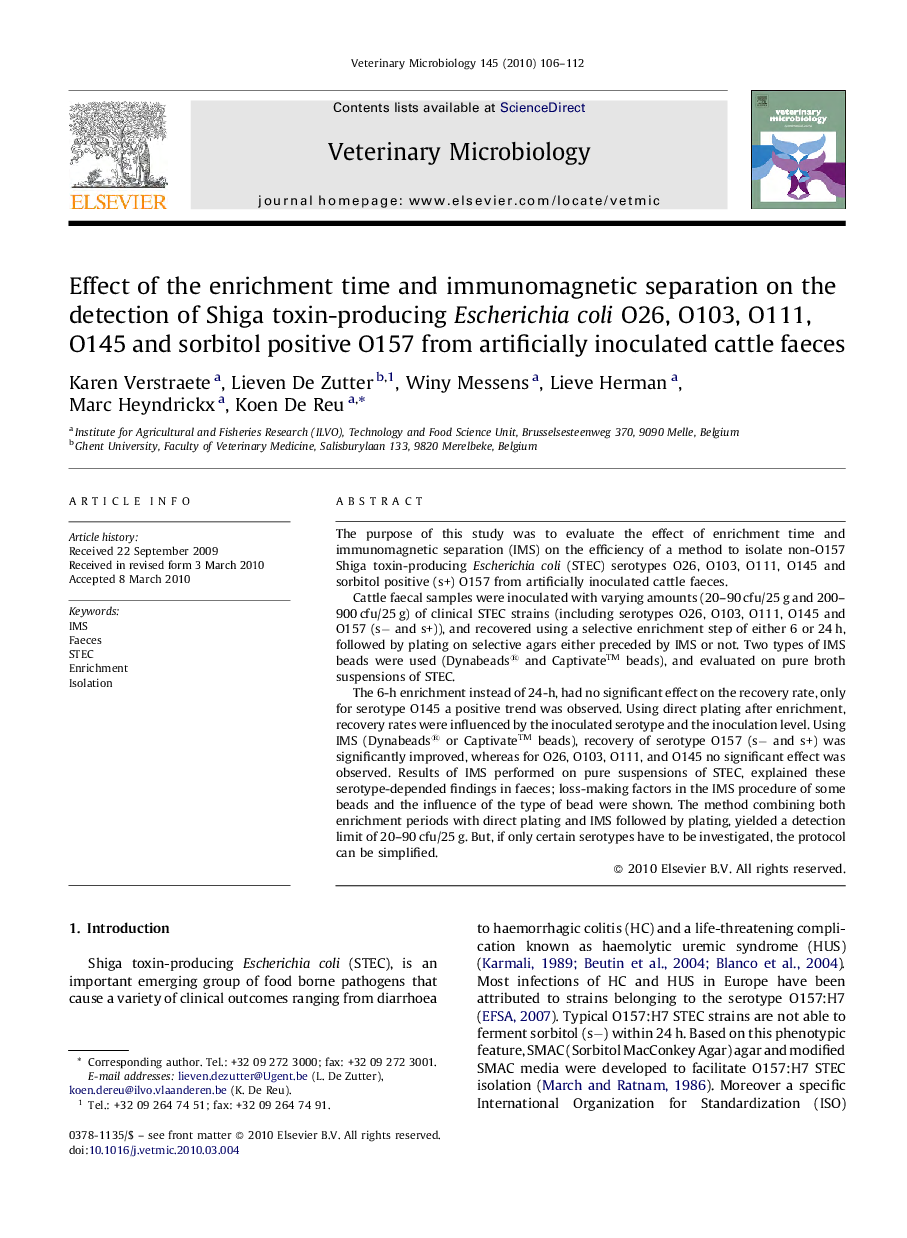| کد مقاله | کد نشریه | سال انتشار | مقاله انگلیسی | نسخه تمام متن |
|---|---|---|---|---|
| 2468077 | 1555410 | 2010 | 7 صفحه PDF | دانلود رایگان |

The purpose of this study was to evaluate the effect of enrichment time and immunomagnetic separation (IMS) on the efficiency of a method to isolate non-O157 Shiga toxin-producing Escherichia coli (STEC) serotypes O26, O103, O111, O145 and sorbitol positive (s+) O157 from artificially inoculated cattle faeces.Cattle faecal samples were inoculated with varying amounts (20–90 cfu/25 g and 200–900 cfu/25 g) of clinical STEC strains (including serotypes O26, O103, O111, O145 and O157 (s− and s+)), and recovered using a selective enrichment step of either 6 or 24 h, followed by plating on selective agars either preceded by IMS or not. Two types of IMS beads were used (Dynabeads® and Captivate™ beads), and evaluated on pure broth suspensions of STEC.The 6-h enrichment instead of 24-h, had no significant effect on the recovery rate, only for serotype O145 a positive trend was observed. Using direct plating after enrichment, recovery rates were influenced by the inoculated serotype and the inoculation level. Using IMS (Dynabeads® or Captivate™ beads), recovery of serotype O157 (s− and s+) was significantly improved, whereas for O26, O103, O111, and O145 no significant effect was observed. Results of IMS performed on pure suspensions of STEC, explained these serotype-depended findings in faeces; loss-making factors in the IMS procedure of some beads and the influence of the type of bead were shown. The method combining both enrichment periods with direct plating and IMS followed by plating, yielded a detection limit of 20–90 cfu/25 g. But, if only certain serotypes have to be investigated, the protocol can be simplified.
Journal: Veterinary Microbiology - Volume 145, Issues 1–2, 28 September 2010, Pages 106–112